
Exploring China
Beijing, Xi'an, Chengdu, Songpan, Yangshuo
 |
Exploring China |
Beijing -
Xi'an -
Chengdu -
Songpan -
Yangshuo -
Back in Beijing
Xi'an
In the evening that day, we left Beijing on a sleeper train and moved overnight to Xi'an. Xian is the capital of Shaanxi province with a population of over 3 million, and one of the most important cities in Chinese history. Today, Xi'an has become an important cultural, industrial and educational center of the central-northwest region. Many of us liked Xi'an the most of all cities visited.
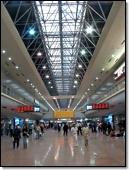 |
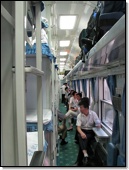 |
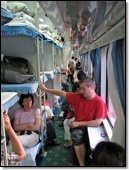 |
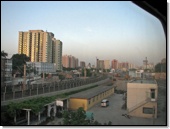 |
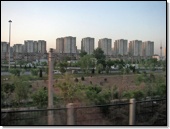 |
| Beijing train station | On the train | Scenery while leaving Beijing | ||
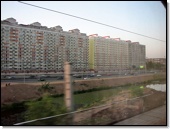 |
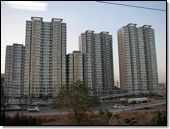 |
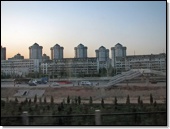 |
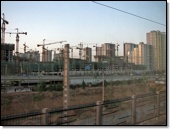 |
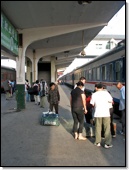 |
| Many vast sleeping neighborhoods by the railroad, and building even more... | Reaching Xi'an early in the morning |
|||
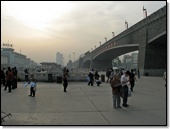 |
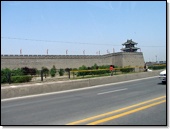 |
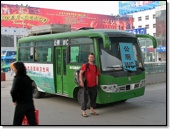 |
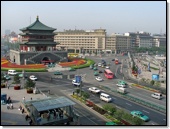 |
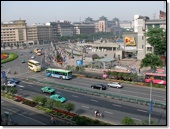 |
| The city is surrounded by a well-preserved wide city wall, dating to the Ming Dynasty (1374), 12 meters high, and spanning 13.7 kilometers. |
A toilet on the move | Xi'an city center, the Bell Tower | ||
After settling in the Bell Tower Youth Hostel, right in the city center, we took off some 40 km east of Xi'an
to see one of the main attractions in the area, the Terra Cotta Warriors.
Terra Cotta Warriors, the Mausoleum of Emperor Qin Shi Huang, is the burial place of the first unifier of China,
surrounded by an army of nearly 8.000 life-size clay figures, horses and chariots, buried there for over 2.000 years.
Not two figures are the same. The Terracotta Army was discovered in 1974 by local farmers drilling a water well, and
is considered the most significant archeological excavation of the 20th century.
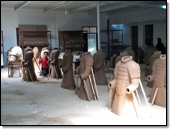 |
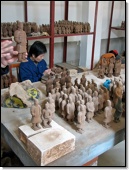 |
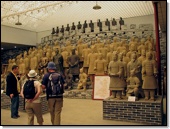 |
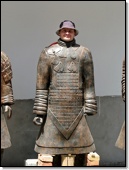 |
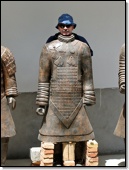 |
| On the way, we have stopped in one of the local shops, where they make and sell replicas of Terra Cotta warriors |
Be a Terra Cotta warrior | |||
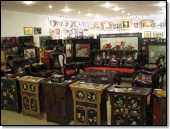 |
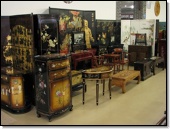 |
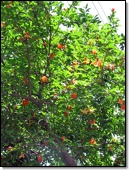 |
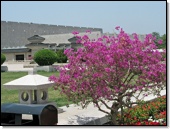 |
| They also make beautiful Chinese style furniture and carpets |
Arriving to the Terra Cotta museum site | ||
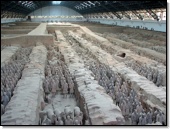 |
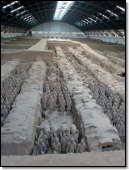 |
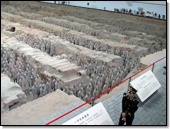 |
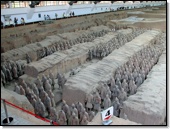 |
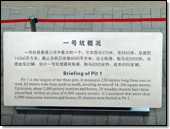 |
| An amazing view on the Pit 1, with more than 2.000 clay solders, horses, and chariots dug up so far, estimated a total of 6.000 of them standing there in a battle formation |
||||
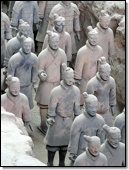 |
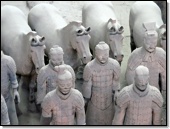 |
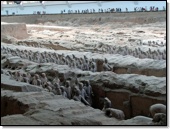 |
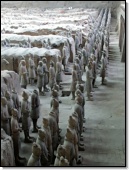 |
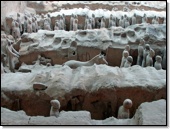 |
| A few close-ups. Each figure is different. | A view on the army from the side | |||
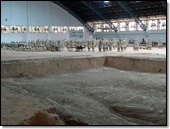 |
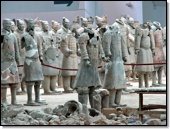 |
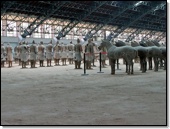 |
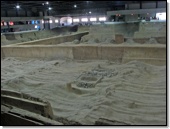 |
| Many figures have been destroyed or damaged, and are being reconstructed | Pit 2 contains four mobile combat units; some 1.000 warriors and 500 horses |
||
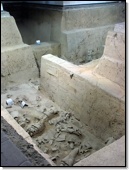 |
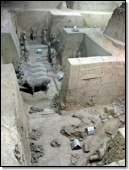 |
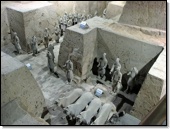 |
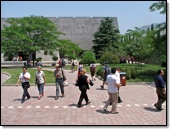 |
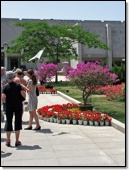 |
| Pit 3 is much smaller, and represents the command center or headquarters |
The whole museum complex is newly built around the location... |
|||
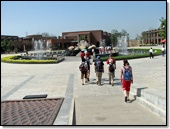 |
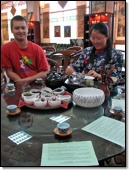 |
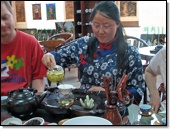 |
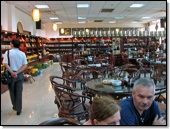 |
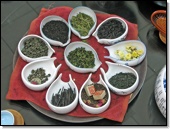 |
| ... with many accompanying activities |
One of them is a tea house, a welcome refuge from the heat to sample many kinds of Chinese tea |
All major kinds of tea | ||
Returning from Terra Cotta Warriors in late afternoon, we went cycling on the Xi'an city wall (Chengqiang). You can rent a bicycle right there on the top of the wall, and drive all the way around for the whole 14 kilometers.
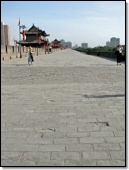 |
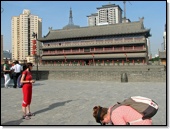 |
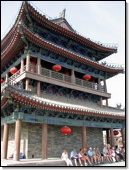 |
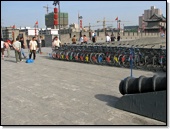 |
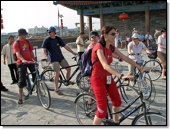 |
| On the top of the city wall | We picked up our bikes | |||
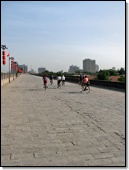 |
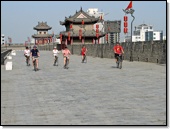 |
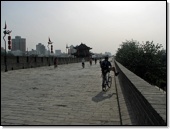 |
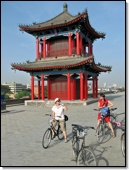 |
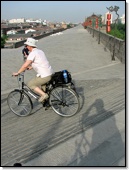 |
| It's a clear, sunny day, the heat has let off in the afternoon, and we are really enjoying it. | ||||
 |
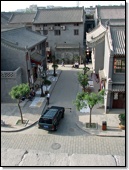 |
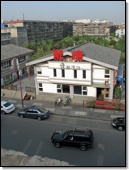 |
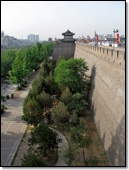 |
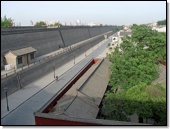 |
| Peeking over the wall on the streets below | The massive wall | |||
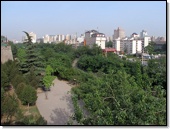 |
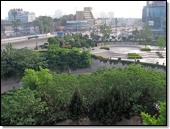 |
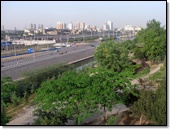 |
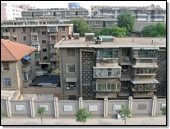 |
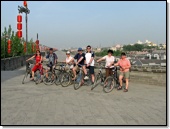 |
| A few impressions of the city from the top of the wall | A typical neighborhood |
Group photo at one of the corners |
||
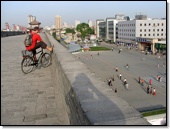 |
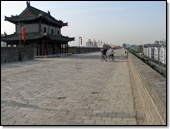 |
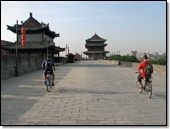 |
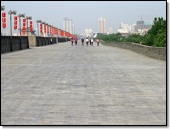 |
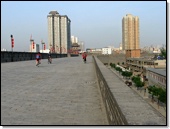 |
| Looking down on the crowd below |
It's an opportunity to get away from the crowds, the noise, and the traffic congestion. | |||
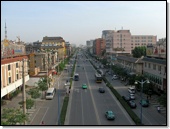 |
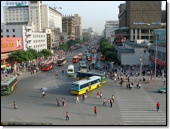 |
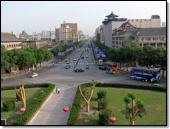 |
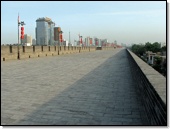 |
 |
| Main city avenues, the latter one going straight to the Bell Tower and our hostel |
Mixing old and new, these buildings are over 600 years apart |
|||
The day ended up with a tasty dinner in the Muslim Quarter, and later on with large quantities of action-priced beer at a local night club. The next day was free to go around the town on our own, until the afternoon, when we were catching another overnight sleeper train to the next destination, Chengdu.
Next page: Chengdu